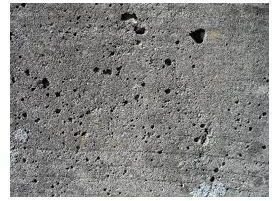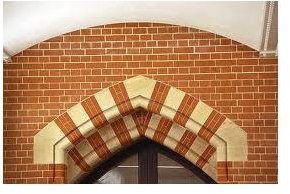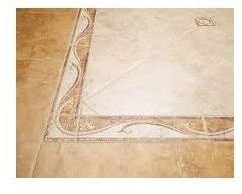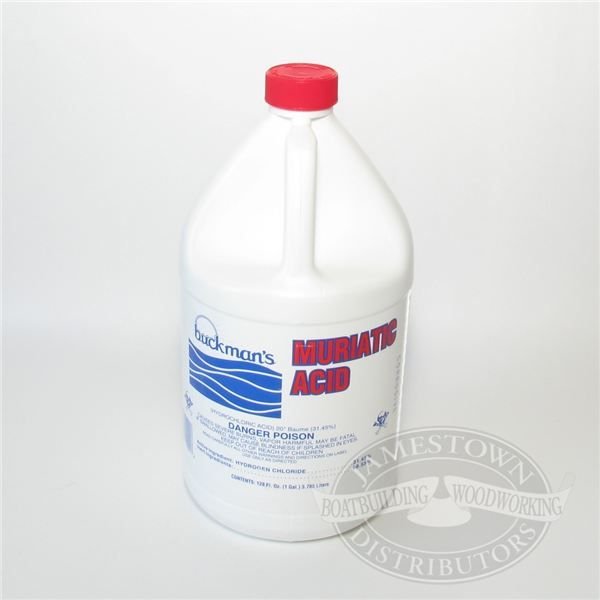Materials Safe for Muriatic Acid Cleaning
What is the Muriatic Acid?
Muriatic Acid is a solution of Hydrogen Chloride (HCl) in water, also known as Hydrochloric Acid or Fuming Hydrochloric Acid. The concentration of HCl is usually 30%-40% and the rest 70%-60% is water (H2O). It is a colorless or slightly yellow liquid with highly corrosive properties. When used for cleaning purposes, muriatic acid should be diluted to at least 1 part acid to 10 parts water and then applied with a brush or sprayer.
Muriatic acid is generally used by:
- Chemical and pharmaceutical manufacturers to produce chlorides and hydrochlorides, and pH control over chemical processes.
- Metal industry for removal of surface oxides.
- Petroleum industry for oil well acidixation that helps to increase the production rate.
- Food industry, especially in the production of high fructose corn syrup.
Materials to use Muriatic Acid with
The harmful effects of muriatic acid highly depend on the concentration of HCl in the solution. Once diluted in water, its acidic properties become less intense.

Concrete
As soon as the muriatic acid comes into contact with concrete, it reacts and produces calcium carbonate, a powder residue. Once the residue is removed, it wil reveal a porous and roughened surface underneath, suitable for any kind of coating adhesion (acid etching). The surface should not stay as it is, because the opened pores will make the surface susceptible to damage.

Masonry
The washing of masonry with muriatic acid neutralizes the alcalinity of masonry and makes it suitable for accepting paints on its surface. The reaction with a strong acid makes masonry rough, or “etched,” and paint adhesion becomes far easier. Similar to the case of concrete, a powdery residue is left on the surface that needs to be cleaned in order to be able to paint or coat it.

Tiles
Muratic acid can be used to clean a ceramic tile floor although it isn’t recommended since it dissolves some of the carbon minerals in the tile (another good solution is white vinegar). After cleaning, you should neutralize the acid first and then rinse before the floor is safe to walk on.
Muriatic acid, however, will attack most of the materials it touches, including varnish, fabrics, metals, plastics (there are some exceptions), and most paints. As mentioned above, the damage caused depends on the concentration of the solution. Even for masonry and concrete, the use of muratic acid should be the last choice, since there are better cleaning solutions such as phosphoric acid, which is less harmful. Other methods may include mechanical cleaning- sandblasting and abrasive wheels.
Precautions when Using Muratic Acid as a Cleanser
The use of muriatic acid as a cleanser should be done with great precautions:
- When diluting the muriatic acid, it is extremely important to always pour acid into water. The opposite procedure (pouring water into acid) may cause a violent reaction.
- Wearing protective clothing, rubber gloves, and plastic safety glasses is absolutely necessary. Muriatic acid can cause severe damage to the skin, eyes, nose, throat and lungs.
- During use, splashing should be avoiding. In any case, a neutralizing agent such as baking soda should be at hand to deal with any accidental spills and splashes.
- After applying the acid solution, the surface should be flushed with fresh water in order to clear off any residue.
- Adequate ventilation is absolutely necessary, especially when the acid is used indoors. The fumes of muratic acid can have harmful effects not only on people, but also on metal surfaces.
- Muriatic acid containers should be kept away from heating sources, since they run the risk of exploding.
Sources:
- Muriatic Acid, PPG Industries Inc
- https://www.hydrochloric-acid.co.uk/muriatic-acid
- Muriatic Acid, Jamestown Distributors
- Acid Cleaning Concrete with Muriatic Acid by All Things Concrete
- Muriatic Acid and Cleaning Masonry Surfaces by the Natural Handyman
- www.tektorum.de
- www.flickr.com
